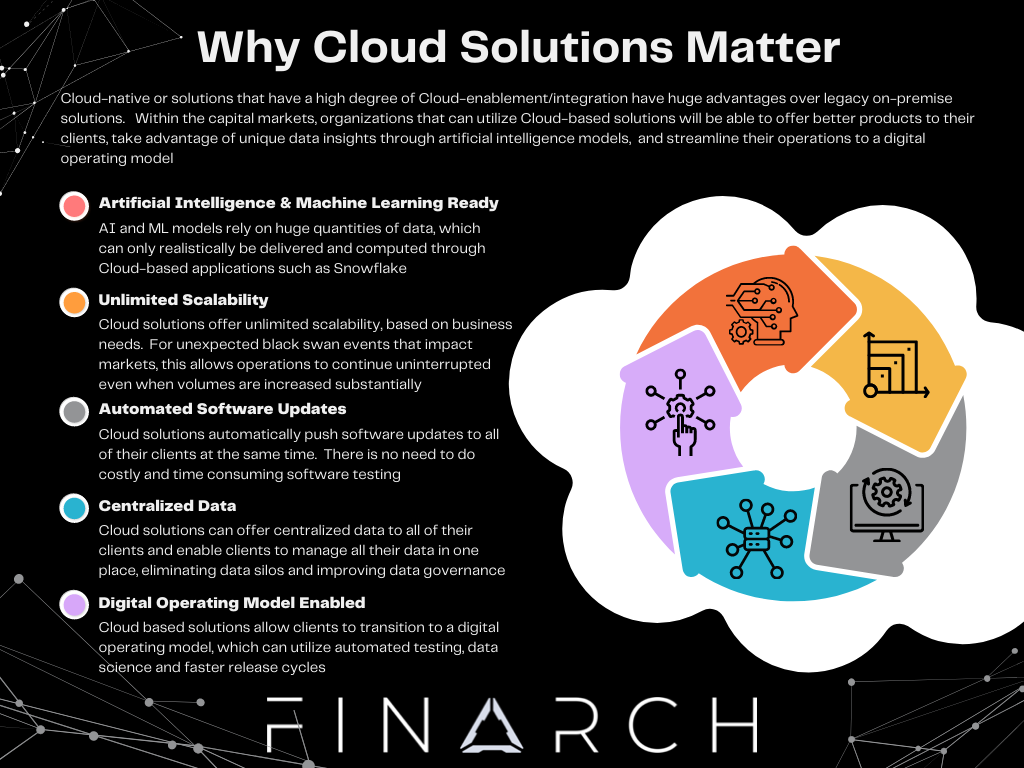
Evaluating the Total Cost of Ownership of Cloud-based Solutions
Within the capital markets and specifically buy-side firms, there are only a handful of systems used across the industry globally. Within these vendors, most claim to offer Cloud-based technology and solutions, but how true is it?
In this article, we will discuss the differences between Cloud-enabled and Cloud-native solutions and how Cloud-washed solutions will impact your implementation timelines, on-going (BAU) costs, and support model.
